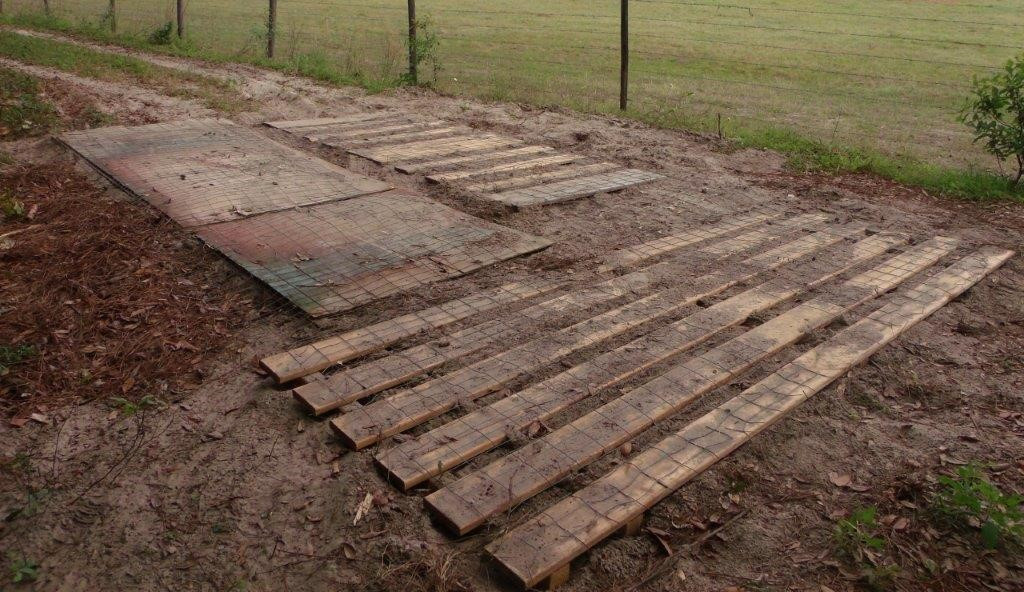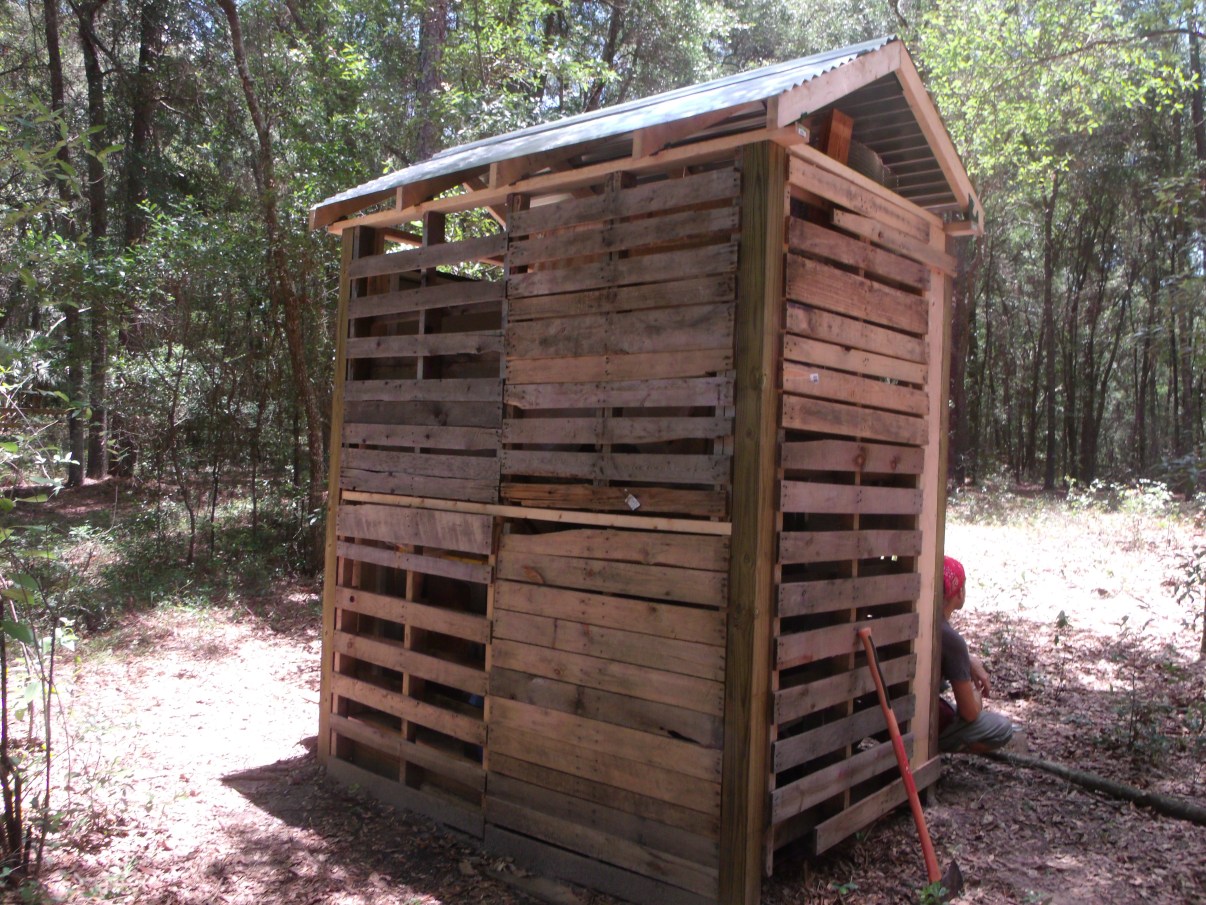Wooden pallets and other recycled materials are everywhere and can be useful in reducing costs to build things. This is about how and why we used them for some of the first projects on our property.
Waste Streams
When I did the Permaculture Design Course I became very excited about using waste streams. No, those aren’t polluted areas of running water, they are just things that people don’t want.
Many people do this without even knowing about the term. For example, people like me who shop at garage sales and thrift shops. Great bargains can come from buying or utilizing things that other people don’t want or are throwing away.
Wooden Pallets
Wooden pallets are a great example of a waste stream. Usually, when something is delivered to a store it arrives on a pallet. Sometimes, the store has a recycling plan for those pallets; otherwise, they just sit outside and rot. A drive around any commercial area, near large stores or stores that sell large items will reveal piles of pallets. I recommend asking the store manager. If no recycling plan is in place, he or she may be happy for someone to take them away.
Recycled Materials Handle Problem
Our homestead has benefited from collection trips made by my husband and I from several places nearby. Initially, we used pallets to handle a sand pit on the access road at the entrance to our property. We had already experienced getting a truck stuck in sand. I decided that the first time was going to be the last time for that to happen.

We used some long pallets and also some discarded wire fencing. That was another waste stream put out for anyone to pick up!
We placed the pallets over the sand pit to judge how they would fit and then dug trenches for the pallets to lay in. You can see in the picture how the pallets were used. It took us most of an afternoon to remove enough sand to lay the pallets flat, but once that was done we stapled the wire fencing over them. There is a lot of sand on our access road. At least with the pallets on top, we can drive over that area and avoid getting stuck.
Wood Chips to the Rescue
Sometime later, the trees along the access road were trimmed and we got a huge pile of wood chips dumped on one side. With several wheel-barrow loads of wood chips, we covered the pallets a few inches deep. This created a more stable driving surface at the entrance to our property. Even after heavy rains, the wood chip-pallet solution held up.
A Dead Hedge
The second project which used a waste stream was a dead hedge. This is simply a barrier built with branches stacked up between staggered fence posts. The fence posts came from a neighbor who had them laying in the backyard next to their fence. The posts came in different sizes, but it didn’t matter with the dead hedge. Once we had them positioned in the ground, the spaces in between can be filled with dead branches. Here is a picture of the posts in the ground.

We plan to gather up dead branches on the property and place them in the dead hedges. Once they are built up, we can plant them with vining flowers and/or vegetables. The only expense we had for this project was the gas auger we rented to dig the holes for the posts. I would definitely recommend using one if you have a bunch of fence posts to get in the ground!
Pallet Shed
A more recent use of waste streams was a shed we built with pallets for the walls. The other materials we purchased for this included: corrugated metal sheets and brackets for the roof, 4”x4” posts for the corners, a metal door, and plywood for the floor. The total cost was less than $400. We also used pallets to support the plywood floor.

Once it was finished, we stored tools and a generator on our property to use when we are there. Now that our house is being built, the shed has been taken apart to be used in another location where it will have a concrete foundation. I recently priced pre-built sheds in our area and the least expensive was still almost twice as much as our recycled materials shed.

Great use of the waste streams! I’m sure there are even more of those you could find if you simply go looking for useful byproducts that people normally discard. You might even find a group of people who alert each other to such in your communitee, the more people you involve, the more things you’ll find. That’s a lot of money saved if you can put the byproduct to good use.